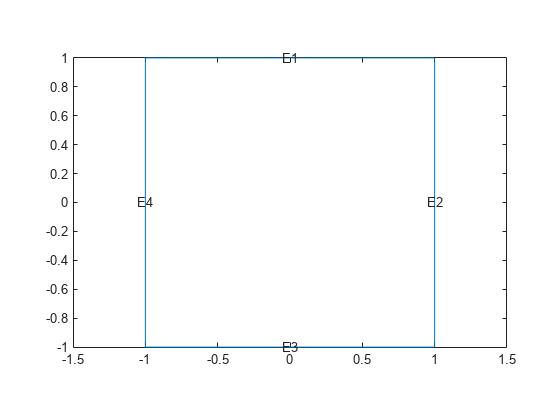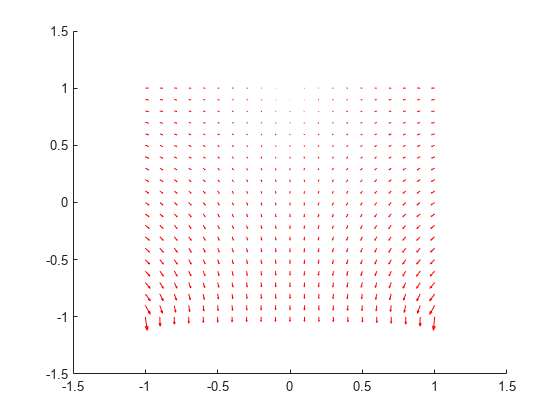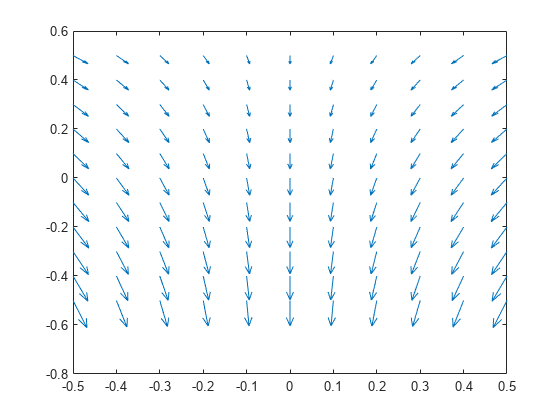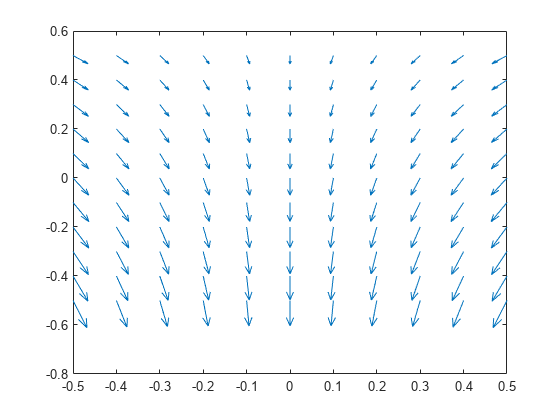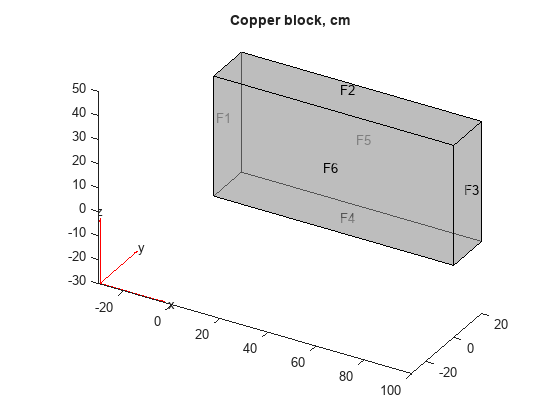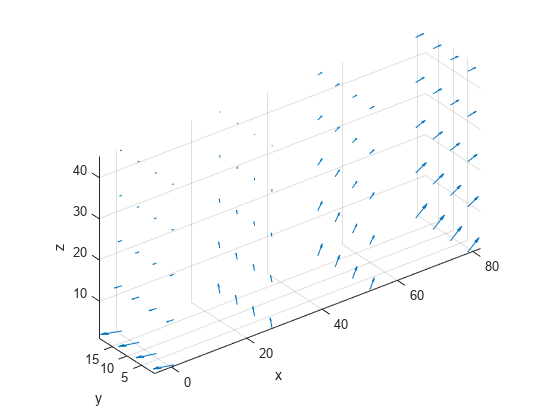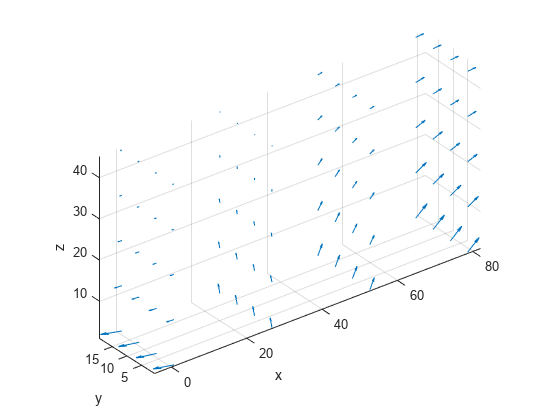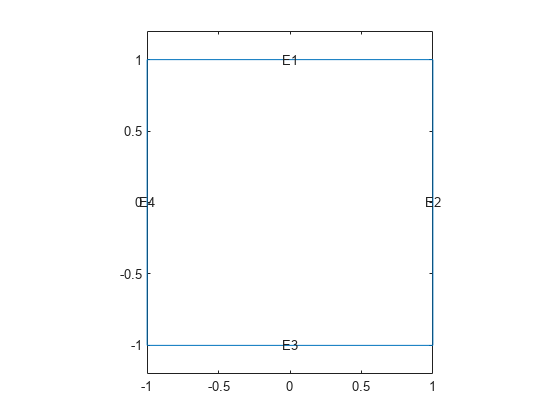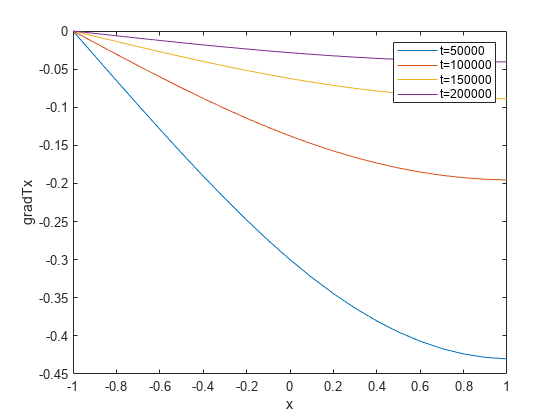evaluateTemperatureGradient
Evaluate temperature gradient of thermal solution at arbitrary spatial locations
Syntax
Description
[
returns the interpolated values of temperature gradients of the thermal model
solution gradTx,gradTy]
= evaluateTemperatureGradient(thermalresults,xq,yq)thermalresults at the 2-D points specified in
xq and yq. This syntax is valid for both
the steady-state and transient thermal models.
[___] = evaluateTemperatureGradient(
returns the interpolated values of the temperature gradients at the points specified
in thermalresults,querypoints)querypoints. This syntax is valid for both the steady-state
and transient thermal models.
[___] = evaluateTemperatureGradient(___,
returns the interpolated values of the temperature gradients for the time-dependent
equation at times iT)iT. Specify iT after the
input arguments in any of the previous syntaxes.
The first dimension of gradTx, gradTy,
and, in 3-D case, gradTz corresponds to query points. The
second dimension corresponds to time-steps iT.
Examples
Input Arguments
Output Arguments
Version History
Introduced in R2017a
